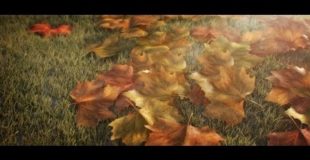https://i.ytimg.com/vi/TdOhAizD1MA/hqdefault.jpg
Learn how to procedurally randomized the color of many duplicate objects using the same material in this free tutorial from Blender Cookie: http://cgcookie.com/blender/2013/10/03/tip-randomizing-leaf-color/
Blender Theme: https://dl.dropboxusercontent.com/u/2127530/kt_modo.xml
source

24 responses to “TIP: Randomizing Leaf Color”
I've tried object info plugged into hue to generate the diffuse colour (no textures, with red as the input colour). It always generates the same purple colour for all the objects. I don't get it.
Is there no 'Fit' node, that would allow you to fit the range coming out of the Object Info Node to a new smaller, or specific range?
Thank you, this was just what I was looking for. But what If I wanted to make the randomized hue automatically variate? For example, I have a plane emitting glowing particles that are all white in color, and I want the hue of the particles to automatically fluctuate between blue, red, green, and yellow, i.e. not have them all maintain a solid color throughout their lifespan. I also want a similar fluctuation with the glow so the particles look like they're pulsating. I know this probably has to do with the composite editor, but I have no clue how to use that effectively so that's why I'm asking.
ColorRamp node should help you alot.
Just to note, the one value you were looking for for the hue node was actually 0.45. Since 1.0 is exactly one revolution of the hue wheel, 1.45 does the exact same thing as 0.45. In your video, you ended up at ~1.45.
Nice. I was wanting to learn more about nodes. Thank You for posting 😀
Pretty awesome, thank you very much.
+Barry Cazimir "Hello can blender be use to put cgi into liveaction and make the cgi look real in the film like its really there ?"
What you are talking about is something that is actually rather simple. The technique that is used is pretty much identical to how green screens are used to make it look like people are in a different location while staying inside the same studio. If you watch the weather on TV, you see this in work all the time when a meteorologist is in front of a dynamic map.
@Barry Cazimir Yes serach for "Tears of Steel"
watch?v=R6MlUcmOul8
Hello can blender be use to put cgi into liveaction and make the cgi look real in the film like its really there ?
Great tip! I'm still learning the very basics 😉
Can you explain shortly what is the difference (except for the level of control) between using a bump map plugged into the displacement socket of the material output and using the displacement modifier using the same bump map?
Make a grass tutorial
Hi there, thanks for the nice tip. But the end result looks more like a painting than photorealistic. Was that intended or is it just the Cycles engine?
Good tip and the results look great. The math on the random output doesn't seem to make sense. Start with a random value between 0-1 and multiply by .1 should give a number between 0 and .1. To get the range to .45-.55 you should have to add .45 but you needed to add 1.3 or something. Seems like a bug?
How can i do this in Blender Internal,bigger Texture and UV Project perhaps ?
Mind blown!
would be a color ramp work between the random and saturation node?
Oh sorry should have looked in the description 😀 Thanks!
I am just dealing with a scene with autumn leaves. This is a great tip. I was unaware of the object info node.
Thx
You could use ColorRamp node to easily set the color range 🙂
Great tut, but I'd suggest to chose bigger rendered view to more clearly see the difference when You work with shaders and adjustments.
Great tutorial I was thinking about how you were going to break up the specularity with that texture. Here the whole time I've been using GIMP. Your way, if used in the correct situations, is way easier.
Very awesome tutorial. I had no idea what the random meant with object info. thank you!